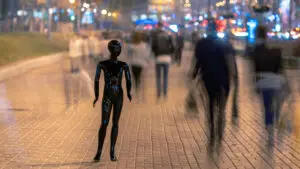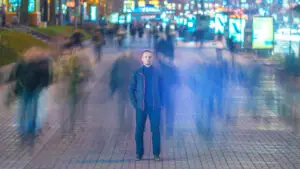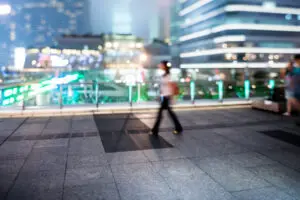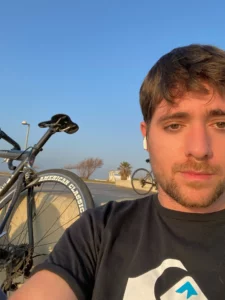You’re just scrolling through your social media feed like any other day. Pets doing silly things, people eating fancy foods, the usual. But then something catches your eye – a missing person post. At first you might just keep scrolling, but this time you take a closer look. And that’s when it hits you – you recognize that face from somewhere. You saw them just yesterday at the coffee shop down the street! Suddenly, your mindless scrolling has turned into a potential breakthrough in a missing persons case.
Yeah, it sounds crazy. Social media helping to find missing people? But these kinds of stories are happening more and more these days. Let me explain how it all works.
The Power of Everyone Looking

One of the biggest strengths of social media in these cases is the sheer number of eyeballs you can get looking for someone. The police can only have so many officers out searching. But then you put out a missing person alert on Facebook, Twitter, Instagram, etc. and suddenly millions upon millions of people are keeping an eye out.
It’s kind of like a virtual search party, but bigger than anything we’ve ever seen before. All those people scrolling through their feeds, looking at stories and photos from their friends and family. Any one of them could randomly spot the missing person in the background of someone’s selfie or street photo. That’s the power of all those connected eyeballs.
The numbers back it up too. Just look at some of the recent cases where social media helped crack it:
- In 2018, a woman missing for 3 weeks was spotted by a friend in a random selfie posted to Facebook from a music festival she had no idea her friend was at.
- A mom missing for over a year after taking her kids for a road trip? Someone studying old social media posts from the time spotted her car in the background of a photo their friend took at a rest stop.
- A teenage girl who ran away from home? Her friends shared her info all over Snapchat, Instagram, etc. and someone from her school spotted her working at a fast food place thanks to those posts.
I could go on, but you get the idea. Social media is like this incredible crowd-sourced search engine that can spot people and details that the authorities would likely miss.
The Digital Trail

But it’s not just strangers spotting the missing person randomly. Social media also leaves this huge trail of digital breadcrumbs that investigators can follow to try and track someone down. Every tweet, snap, post, etc. could be a clue about their mindset, whereabouts, or who they were with.
It’s mind-blowing how much someone shares online without even realizing it. A selfie from the beach on vacation? Boom, now investigators might have a rough idea of what coastal area to search based on that photo’s metadata. A status update mentioning they’re feeling depressed? That could hint at their mental state and why they may have gone missing.
And those are just the obvious stuff. Investigators can use all kinds of clever digital forensics to squeeze every last clue out of a person’s social media presence when they go missing. Studying friend networks, geotagged posts, internet habits – it all helps create a profile to hopefully lead them to the person.
Think about that missing woman from the news a few years back. She had been radio silent and there were no leads for months. Then some incredibly devoted internet detectives started piecing together her old posts, things she had liked, and friends she still had on socials like Twitter, Instagram, etc. Using all that, they were eventually able to pinpoint the general region she likely was in based on these tiny crumbs of data. Crazy but true!
Do’s and Don’ts When It Comes to Posting

With all this power that social media has though, you gotta be careful with how you use it when someone goes missing. There’s a right way and a wrong way to go about it all.
On the “do” side of things:
- Share up-to-date info and photos from official sources like the police
- Amplify any potential credible sightings you see others posting about
- Engage with the missing person’s social accounts to show support for finding them
As for what NOT to do:
- Don’t spread unconfirmed rumors or fakes tips that could mislead the search
- Don’t badger the person’s family or friends with requests for info on private channels
- Don’t try playing internet detective by aggressively speculating or accusing people online
Basically, use some common sense. Share vetted info that could actually help, but don’t go overboard into internet mob territory. Finding the missing person should be priority #1.
I’ll also add – listen to what the person’s loved ones want when it comes to social media and the search. Some families prefer keeping details quieter on public channels. Others go all-in on using online tools to spread awareness. Respect their wishes.
What the Future Holds

The more social media grows and evolves, the more powerful a tool it will become for finding missing people. Just think about some of the developing tech:
- Facial recognition software that could automatically scan posted pics/videos for potential matches
- Advanced location tracking that could piece together where someone’s phone/device last was based on their online activity
- Analyzing data like hashtags, mentions, etc. to instantly see conversations related to the person
We’re just scratching the surface here. As handy as socials are now for these cases, the tech will only get more sophisticated from here.
Of course, that kind of powerful tracking potential also raises some privacy concerns. Like, at what point does using people’s data this way become a violation? There’s already arguments around law enforcement using things like geofenced Google data to gather evidence. Applying similar tactics to finding missing folks could be controversial.
My take? As long as it’s being used responsibly and legally to literally save lives, I’m all for it. But there 100% needs to be guidelines and safeguards put in place. Can’t have unchecked surveillance and data mining. It’s a fine line to walk between privacy and rescue.
Real Life Perspectives

At the end of the day, hearing from people directly impacted by these situations is most important of all. Like Amanda Berry, who was one of the three women held captive in Cleveland for over a decade before finally being rescued. Her perspective really drives home why social media’s role is so vital:
“Without that 911 call from those guys [who Amanda was able to alert], I’d still be missing today. And those guys only knew to investigate and call the cops because they had seen my picture and the missing person reports that my friends and family had spread for years on Facebook and online. Social media literally helped save my life after being gone for so long.”
Or Jannel Cruz-Bunon, whose teenage son Ralph went missing for two months in Hartford, Connecticut back in 2020 before being found safe thanks to a social media tip. In her words:
“I am so grateful to every single person who shared Ralph’s picture online and helped us look. I don’t have a big family, so being able to put his face out there to hundreds of thousands of people – that gave us a chance we wouldn’t have had otherwise. Social media can be horrible, but it can also be amazing when used for things like this.”
When you hear the raw emotion and gratefulness from people like that, it really hammers home the value in using every tool available, social media included, to find our missing loved ones.
At the end of the day, we’re all human. And we’re all part of this incredibly powerful virtual web that connects us in both good ways and bad. But stories like these show one of the best uses for it – a missing person found, a family reunited, a life saved. All thanks to a random photo or update that someone happened to see while scrolling their feed.
So keep your eyes peeled out there. That silly pet video you’re laughing at could just contain the clue that breaks a case wide open. The power is in all of our hands (and newsfeeds).

